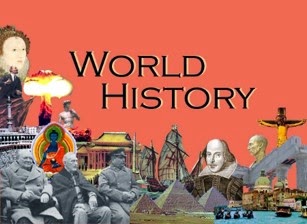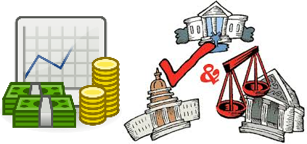Government Regulation
“Safety first vs. Safety second” is the big question
Government makes laws that regulate every part of the economy
Banks
Factories
Stores
Schools
Why does the government regulate the economy?
Protect:
Workers
Consumers
Businesses
Environment
Protection via regulation comes with a cost
More regulation = Less Productivity (less $$$)
Less regulation = More Productivity (more $$$)
Balancing act
There are no solutions. There are only trade-offs
Government makes law — Government agency enforces law (regulates)
Consumer Product Safety Commission (CPSC):
enforces federal safety standards
Environmental Protection Agency (EPA):
establishes and enforces pollution standards
Federal Aviation Administration (FAA):
regulates and promotes air transportation safety, including airports and pilot licensing
Federal Deposit Insurance Corporation (FDIC):
insures bank deposits, approves mergers, and audits banking practices
Federal Trade Commission (FTC):
ensures free and fair competition and protects consumers from unfair or deceptive practices
Food and Drug Administration (FDA):
administers federal food purity laws, drug testing and safety, and cosmetics
National Labor Relations Board (NLRB):
prevents or corrects unfair labor practices by either employers or unions
Occupational Safety and Health Administration (OSHA):
develops and enforces federal standards and regulations ensuring working conditions




